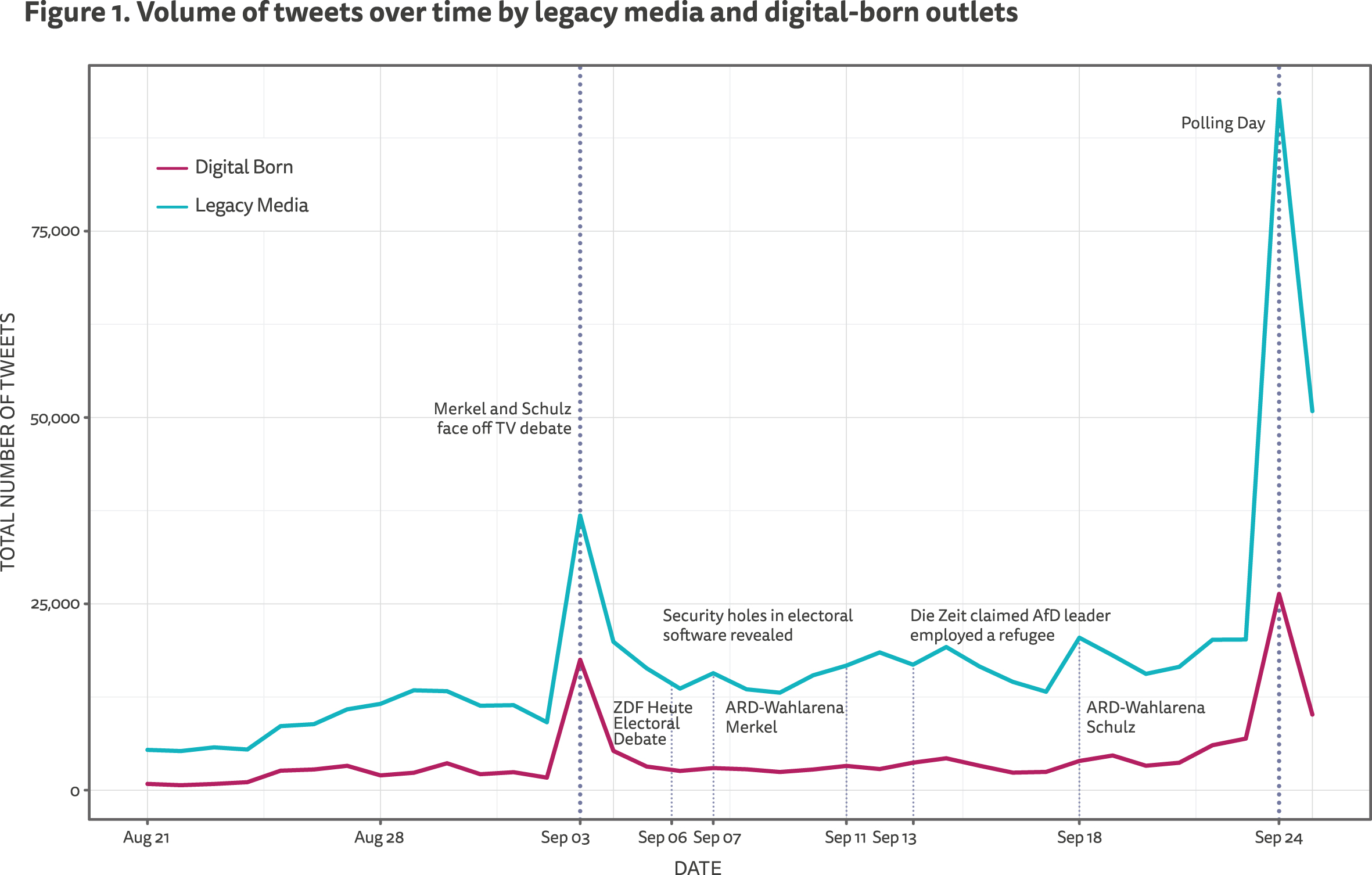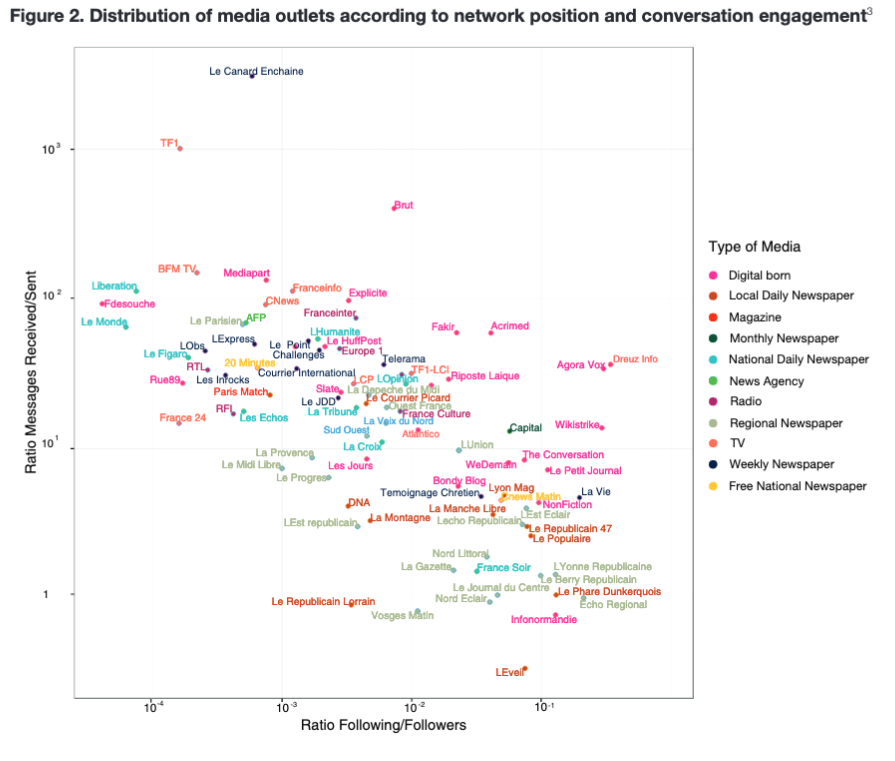Digital-Born and Legacy News Media on Twitter during the German Federal Election
Which news media drew most attention during the German Federal Election on Twitter? Which one ranked top in terms of audience engagement? These are just two questions that we answered in these RISJ Factsheet. Here, we explained how news audience attention took shape on Twitter in the weeks ahead of the polling day and up to the day after this major political event in Europe. We showed how the competition between digital-born outlets and legacy media unfolds on Twitter. Digital-born and legacy media are competing to control the most central positions in the flow of online news in most of the Western media markets, Germany is no exception. How this competition, which is even greater during elections, unfolds on social media platforms is still largely unknown. Our research advances the knowledge in this field.

The most important result of the study is that the German main public service media organisations, ARD and ZDF, alongside several weekly news publications figured very prominently on Twitter during the campaign. They all achieved a wide reach and higher levels of audience engagement than other German news providers. These results speak to the importance that quality journalism and video content have for German citizens. We found that German Twitter users engaged largely with quality journalism from trusted brands across much of the political spectrum and that commentary on Twitter as well as tweets containing multimedia content performed particularly well.
We gathered 4.4 million tweets, collected over 36 days in the lead up to the election, and obtained a filtered sample of 729,799 news-related Twitter messages. The sample provided unique evidence to understand the role of German news media outlets on the social media platform.

